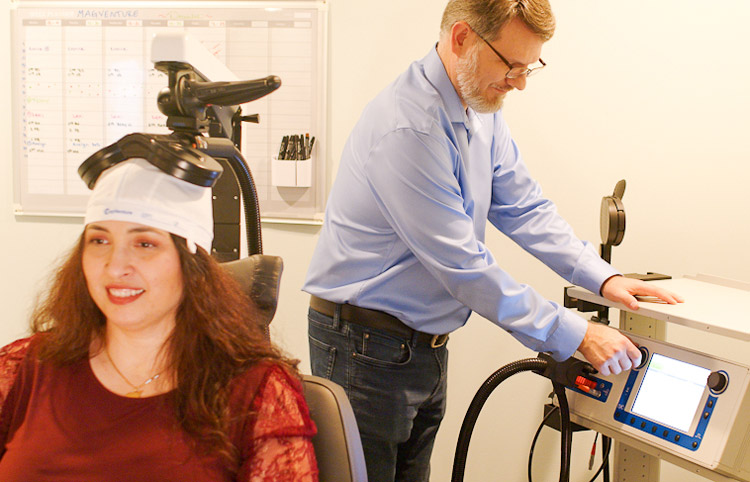Where there is darkness, there is always a source of light. Whenever there is a storm cloud, a rainbow soon follows. These examples are a good way to figuratively represent depression and how it affects more than 264 million people of all ages globally. When you have severe depression, even the most basic life functions can become almost unbearable to perform. But what you need to know, is that there are options available for treatment. Among the most groundbreaking are the non-invasive techniques being practiced today.
What do we mean when we say, “Non-invasive depression treatment?” Traditionally, this refers to any medical treatment that does not break the skin or involve contact with the internal body cavity. One example of a non-invasive medical procedure would be a blood-pressure cuff or a machine that monitors vital signs. Because such devices do not make any deep contact inside of your body, they are considered “non-invasive.” For most patients in the field of mental health who suffer from mood disorders such as depression, most relief is obtained in the form of ingesting Selective Serotonin Reuptake Inhibitors (SSRIs) or “anti-depressants.” These medications, such as Zoloft, Paxil, or Prozac, are some of the most common treatments alongside cognitive behavioral therapy (CBT). Because these medications come in the form of pills that are ingested, they are considered an invasive form of depression treatment.
The problem is that while SSRIs and cognitive therapy have been considered the gold standard for decades, studies have shown that they are not always effective when it comes to severe bouts of chronic and resistant depression. Studies have shown that up to 35% of patients getting treatment for depression do not recover even after standard combinations of medication and therapy.
Medication, while correlated to psychological improvement, is not always going to be a direct cause of recovery for some patients. If you are one of the many who still struggles with their resistant major depression, there are non-invasive treatment options. Non-invasive treatments are valued for their cost-effectiveness, but perhaps even more so, the lack of side-effects when compared to other procedures. This lack of major side effects, such as nausea or weight gain, is part of the reason why many are looking to embrace Transcranial Magnetic Stimulation (TMS) for depression. This non-invasive treatment is gentler on patients and can even be covered by insurance.
TMS involves, in layman’s terms, re-activating the areas of your brain that are not performing as well as they could be. This process involves encouraging the brain return to a healthier state, by stimulating areas of your brain with electromagnetic fields generated by a machine. This is much different than most other solutions that involve contact with the internal body. TMS devices are already cleared by the FDA, with more being created and tested over time as TMS continues to be refined.
Dr. Aaron Albert based out of Wilmington, North Carolina, knows that your comfort is a substantial part of helping you on the first step to beating your depression. Each session of TMS therapy takes only 10-20 minutes, and after several weeks, the treatment has a high rate of positive effectiveness amongst patients.
Depression is a common mental illness that affects millions, and a big part of accepting any treatment is to know you are not alone. You have other options to help get yourself back to a state of mental well-being, and TMS may be just the type of treatment you have been looking for. Call us for more information about TMS.

